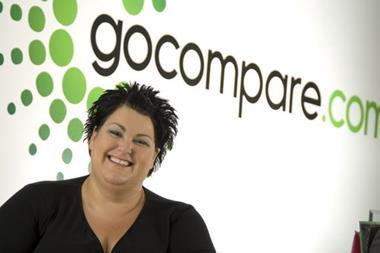Personal lines insurers should examine their strategies on price comparison sites.
Norwich Union’s decision to stop distributing its products through price comparison websites was bold and surprising. It also represents something of a watershed in the debate on personal lines distribution.
NU has been coy about its reasons, saying only that as a direct insurer it wishes to deal direct with clients rather than be one step removed. It is undoubtedly a blow for the aggregator sector to be rejected by a major brand. It also indicates that price comparison sites do not necessarily have to feature in a company’s personal lines distribution strategy (whether NU’s move is successful remains to be seen, however).
The market share of price comparison sites has increased rapidly over the past three years. At the same time, insurers have used aggregators to boost premium volumes. Medium-sized insurers in particular have increased premium volumes by using aggregator sites as a primary distribution channel. AXA, Esure and Admiral have delivered strong growth in their motor books thanks to this medium, according to analysis by Deloitte.
But the websites have been criticised for their impact on profitability, as the price transparency they bring has suppressed premiums and increased customer churn. One executive at a personal lines insurer described aggregators as a disaster for the industry.
It is too early to tell whether aggregator business is less profitable than business from other channels. Aggregators have only started to produce significant volumes of business in the past couple of years, so there has been insufficient time to conduct meaningful analysis. It is also difficult to isolate aggregator business from other channels.
Will others follow NU’s lead? For smaller or niche insurers, aggregators are a powerful tool, giving them access to customers they could not otherwise reach in a cost-effective way. Aggregators also enable insurers to quickly build a portfolio in a particular niche. As such, the websites are likely to be of value to these companies. “Unless you have the scale of NU, it is a tough model to ignore,” says Stephen Ross, a partner at Deloitte.
For larger insurers with multiple distribution platforms, the situation is not so clear-cut. These companies have the brand strength and financial muscle to compete without aggregators. If the larger insurers are spending money on marketing across other distribution channels, why spend extra to deal with aggregators? Price comparison websites also separate the insurer from the customer, which is undesirable, and diminish customer loyalty, which adds to overall acquisition costs.
“Aggregators have been spending more [on marketing] and need to recoup the money to maintain their margins,” points out Clare Ryder, managing director of Salient Solutions, an insurance consultancy.
The question for the larger insurers is whether the additional business that aggregators can provide is worth the extra cost. NU clearly thinks it is not. In contrast, Royal Bank of Scotland has put its insurance brands, except Direct Line, on one aggregator site.
We don’t yet know how the major insurers will adapt their personal lines distribution models. But larger companies should be reviewing their strategy, considering whether to work with the comparison sites at all or reduce their exposure. They need to consider the strength of their direct capabilities against the income that can be derived from aggregators.
In response, aggregators should be looking to develop their business model and considering ways to boost their revenues, such as offering premium finance services or cross-selling additional products.
michael.faulkner@instimes.co.uk
Key Points
• Price comparison sites have enabled insurers to grow their business volumes.
• It is difficult to determine the profitability of aggregator-produced business.
• Smaller insurers will continue to use the websites.
• Large insurers will consider their involvement with aggregators. Some will scale back or withdraw from placing their products on the sites.


































